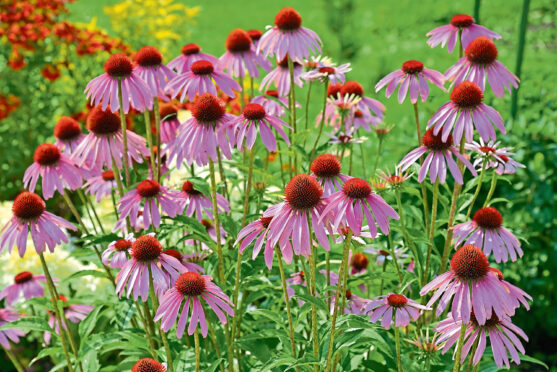
It’s time to get the measure of unruly weeds and invasive plants and start preparing for next year’s colour extravaganza, says Agnes Stevenson.
This week’s award for the worst weed in my garden goes to dock. It has large leaves, spikes of rust-coloured flowers and tap roots so deep they could out-compete most show bench carrots.
It sneaked in amongst the persicarias, with which it shares similar foliage, and now it has found its way into the peonies and through the agapanthuses.
I should have been on its case earlier but now I’m attempting to limit the damage by cutting off the flower spikes before they have a chance to cast their seed further around the garden.
I’ve been doing the same with the Alchemilla mollis, which is currently mounting a takeover bid. It is easy to remove but its growth habit is very prolific and it has found its way into every nook and cranny.
I wish I had the same problem with Japanese anemones. In many gardens these run rampant, but not in mine.
Three years ago I planted a single specimen and in all that time it has made no attempt to multiply, despite being given every encouragement, which is a pity because the borders have lost most of their early summer colour and some pink anemones would brighten them up.
Instead, I’ve decided to pass that job to Echinacea purpurea. I spotted this earlier in the week in the walled garden at Dumfries House, where it was the stand-out star amongst many lovely things.
It grows easily from seed and can be sown now and over-wintered under cover, so that’s what I’ve decided to do. I’ve sent off for the seed and will get it started before the days begin to shorten.
You can do the same with many perennials and annuals, sowing them now in readiness for being planted out in spring.
With the annuals it’s an easy way to get flowers early in the season and you can keep the show going by sowing more directly into the ground once the soil has warmed up. One packet should give you enough to raise plants over winter and still have plenty of seed to scatter in spring.
Top candidates for this treatment include cosmos, which can take a long time to flower from direct sowing, along with calendula, which is a magnet for pollinators if you stick to growing the simple forms.
Raising annuals or perennials is a better alternative than allowing a greenhouse to stand empty over winter. If you don’t have a greenhouse then transparent storage containers will do the job just as effectively.
Meanwhile, I’ve finished planting up the pyracanthas. I bought these at various times and they all produce berries of different colours, so when they finally smother the wall at the end of the patio they should deliver an autumn medley of orange, red and yellow. While not entirely tasteful, it will be cheerful and I don’t think birds feasting on them will be fussy.

Enjoy the convenience of having The Sunday Post delivered as a digital ePaper straight to your smartphone, tablet or computer.
Subscribe for only £5.49 a month and enjoy all the benefits of the printed paper as a digital replica.
Subscribe